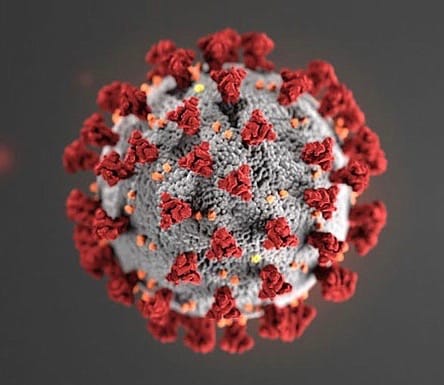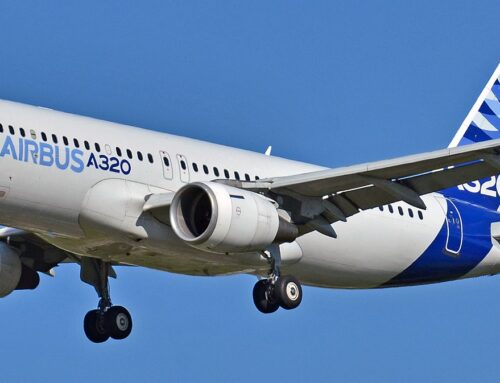As the grip of the Covid-19 pandemic across the World tightens in some countries and eases in others there remains the reality that for the aviation industry, as well as many others, the World may well be changed forever.
Along with the challenges raised for the industry there are also some opportunities and potentially some positive outcomes. This paper is meant to give a brief overview of some perspectives on the potential impacts over the next few months. It is a personal view and is necessarily only intended to be high level.
Airlines and Airports
It is clear that the Airline industry will be one of the hardest hit. Losses to the industry are currently estimated by IATA to be of the order of USD314bn (21 April 2020), a revision on its previous estimates of USD113bn and USD252bn. This figure represents 37% of previously forecast total passenger carrying revenue.
A typical European airline’s liquidity was around two months of revenue at the onset of coronavirus restrictions with the end of May being talked about as a critical point that may see the end of a number of household names without significant intervention. One of the challenges has been the unwillingness of governments to co-operate – a good example being that when the US President peremptorily elected to close US borders to incoming European flights it was done without consultation with his European counterparts. The worry is that national self-interest will prevail over international cooperation with the resultant impact on the health of the industry, the competition and the bigger picture of international trade.
It is no coincidence when seeking historical comparisons to note that ICAO was established a full year before the United Nations in a post war world. As we look to re-structure after the pandemic ‘war’ we are now experiencing, it must be hoped that Aviation will again be seen as an urgent, internationally important priority.
Flybe, Trans State Airlines, Compass Airlines and Virgin Australia are already noted casualties of the financial impact of the pandemic with many other notables in difficulty. It has to be considered that, even when worldwide travel restrictions are lifted, appetite to travel may take considerably longer to recover. Other airlines, whilst not having yet reached a critical point, have grounded large sections of their fleets which will create a mismatch of revenue to expense that will hasten the problem. Lufthansa have 700 of their 763 non-cargo aircraft not flying including discontinuing LCC Germanwings. On 30th March, easyJet grounded its entire fleet. Ryanair have suspended all flights until June.
LCCs will likely be amongst the casualties coming out of this crisis, with their structure possibly being the least resilient to impacts on their liquidity.
It is clear that differences in how airlines finance their aircraft will show different outcomes. Those who own their aircraft without debt will see less severe outcomes ranging to those who are 100% leased or financed continuing to have a large capital outflow without the balancing revenue. This dynamic will clearly create challenges for a number of airlines and potentially for lease companies. The only positive in the equation being unprecedentedly low interest rates and the possibility for some operators to refinance coming out of restrictions.
With airlines as their primary users, Airports have also been significantly impacted on revenue. On a positive note, cargo flights have seen increases around the world but in nothing like the same percentage movements as the equivalent reduction in passenger traffic. Overall movements are dramatically down and increased testing and sanitising methodologies along with social distancing requirements have put an increased burden of cost on the airport infrastructures. Whilst many airports have moved to zero or near zero passenger numbers and have closed most non-essential shops and restaurants, they are still having to work hard to remain open for critical services, not least repatriation flights, movement of medical supplies, freight flights and first responder services.
Major Airframe Manufacturers and Aerospace
This category of stakeholders is also seriously impacted and looking inwardly to plan how best to survive. Boeing, already reeling from the impact of the grounding of the B737 Max, has identified significant concerns and announced on 24th April that they had terminated a USD4.2bn deal with Embraer. Boeing’s reduction of workforce and reopening of individual manufacturing sites across the US, as lockdowns permit, points to the need to manage liquidity carefully. Airbus have described themselves as ‘bleeding cash’ at the moment and point to significant job losses and emerging as a much leaner organisation. Airbus has withdrawn their 2020 guidance and are bolstering their balance sheet with a new USD16bn credit facility and cancelled their 2019 dividend.
With the number of airlines already out of business and others that are expected to follow in the next month, the demand for new airframes could also be impacted as the nearly-new market is potentially flooded with equipment that will have a knock-on effect on manufacturing revenue.
Military and First Responder operations
This area could be one of the positive stories to come out of the Covid-19 pandemic. Major defence manufacturers are, with a few exceptions, maintaining relatively high levels of production. BAE Systems and Leonardo are good examples continuing to utilise high employee and production levels whilst others are choosing selective shutdowns of short periods in favour of the wholesale shutdowns seen in other parts of the industry.
Whilst it is not envisaged that a pandemic would be primarily policed by the military, most governments would look to maintain or increase their military presence and capability at a time of national and worldwide vulnerability.
During the crisis, first responders are evidently seeing a significant strengthening of demand with police managing lockdowns and supporting remote communities; ambulances and flying doctors being increasingly utilised to support the crisis whilst maintaining non-pandemic emergency support; and firefighting machines able to continue their work with effective social distancing. The opportunity has been there for commercial operators to re-equip existing fleets and add their support during the time of increased demand, and this positive revenue is evidenced around the world. There are many months left in this increased demand and it becomes a much-needed boost in the industry.
General Aviation
The different sectors of General Aviation are likely to have very different experiences both during the Covid-19 pandemic and following an easing of restrictions.
One thing that is a clear message I am getting back from all sides of the General Aviation industry is the positive sense amongst the higher calibre operators that the crisis may bring some much-needed improvement to the currently polarised industry. There is a hope that poorly managed and weakly financed operations will not survive the changes, and that this will reduce some of the irresponsible competition leaving in the wake of the crisis a healthier industry backed by more cautious financiers who will raise the bar on proof of concept before lending.
These are interesting times for the offshore oil and gas industry, with oil prices turning negative for the first time in their history, but the exceptional operators around the world have risen to the needs of the industry with typical professionalism and cooperation. They have designated specific aircraft outfitted as medical repatriation aircraft for Covid-19 infection flights from rigs and have reconfigured aircraft to increase separation between crew and passengers.
The helicopter industry seems to be thriving in this environment with many operators providing essential services. Everyone is adjusting to the new needs of the pandemic with screening dividing crew and ‘passengers’; social distancing and protective gear in hangars and around equipment; looking at changing shift patterns to meet the demand as well as the restrictions. In remote areas helicopters are increasingly being used to drop supplies to communities and fly in medical crews efficiently.
I think as the virus moves through the continents, the rotor wing industry will see a change which will also develop as we understand it more and position ourselves as a worldwide community for this potentially happening again. There are currently wide operational variances around the world though, and as one area is slow others are picking up the pace. Operators are doing a number of things. They are refinancing aircraft as money is cheap to borrow; they are changing their fleet or upgrading for the same reason; they are seeing growth in the rotor wing area and business metrics are positive.
Whilst some fixed wing areas closer to the airline model are having a similar experience to the airline industry, there are wide variances in the smaller operations. Many have found themselves unable to operate as their customer base has evaporated. Business aviation has been significantly reduced and, with effective and successful teleconferencing technologies coming to the fore coupled with diminished appetite to travel, one has to wonder if business travel will ever return to its former level. That said, if managed correctly, the desire to reduce risk in travel and not expose employees to large numbers of people at airports could be seen as an opportunity to the general aviation industry if operators choose to effectively market themselves in that way.
Sales and purchasing
At the moment the industry is experiencing a hiatus as restrictions prevent operators, throughout the spectrum, travelling to view pre-owned aircraft and new deliveries are also slowed. The prudent operators will be using this time to plan the shape they wish to be in to exit the pandemic period. For some this will be in the form of a leaner operation but for others, opportunities for development coupled with reduced competition will be gratefully seized. Whichever side of that equation an operator sits there will undoubtedly be a mini boom in sales and purchasing after the full impacts of Covid-19 are played out. Operators who did not survive, and their lessors, will be looking to sell equipment whilst the opportunists who have positioned themselves well will be looking for the expected bargains, and sales agents will be busy brokering deals in all parts of the business.
In Summary
Despite all of the uncertainties around the current World crisis that we are living through, what is certain is that we will have an aviation industry as we emerge that will look very different. Not all of those changes will be negative for either the industry or the consumer. There are signs that, with the right level of international government intervention and cooperation, and with very careful anticipation and planning in this period, we could emerge a much healthier industry less tolerant of inefficiency.
Jon Woodrow – 27th April 2020
The contents of this article and the AViAD Global Ltd website and blog are the personal view of the writer and are intended to be an opinion available as a general resource regarding the matters covered. The contents cannot be quoted or distributed in whole or in part without the express permission of the writer.







